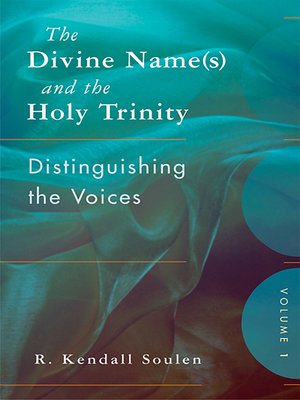The Divine Name(s) and the Holy Trinity, Volume One
ebook ∣ Distinguishing the Voices
By R. Kendall Soulen

Sign up to save your library
With an OverDrive account, you can save your favorite libraries for at-a-glance information about availability. Find out more about OverDrive accounts.
Find this title in Libby, the library reading app by OverDrive.



Search for a digital library with this title
Title found at these libraries:
| Library Name | Distance |
|---|---|
| Loading... |
Few things are so vital to Christian life yet so mired in controversy as the language we use to name the mystery of the Trinity. This project offers a fresh map of Trinitarian language that is simple, yet profound in its implications for theology and practice. Soulen proposes that sacred scripture gifts us with three patterns of naming the persons of the Trinity: a theo-logical pattern characterized by oblique reference to the Tetragrammaton (the divine name); a christo-logical pattern characterized by the kinship vocabulary of Father, Son, and Spirit; and a pneumato-logical pattern, characterized by the open-ended multiplicity of divine names. These patterns relate in a Trinitarian way: they are distinct, interconnected, and, above all, equally important. The significance of this thesis resides in its power to map the terrain of Trinitarian discourse in a way that is faithful to scripture, critically respectful of tradition, and fruitfully relevant to a broad range of contemporary concerns.|Few things are so vital to Christian life yet so mired in controversy as the language we use to name the mystery of the Trinity. This project offers a fresh map of Trinitarian language that is simple, yet profound in its implications for theology and practice. Soulen proposes that sacred scripture gifts us with three patterns of naming the persons of the Trinity: a theo-logical pattern characterized by oblique reference to the Tetragrammaton (the divine name); a christo-logical pattern characterized by the kinship vocabulary of Father, Son, and Spirit; and a pneumato-logical pattern, characterized by the open-ended multiplicity of divine names. These patterns relate in a Trinitarian way: they are distinct, interconnected, and, above all, equally important. The significance of this thesis resides in its power to map the terrain of Trinitarian discourse in a way that is faithful to scripture, critically respectful of tradition, and fruitfully relevant to a broad range of contemporary concerns.







